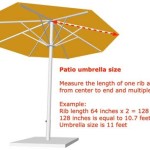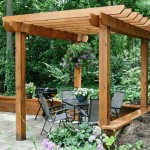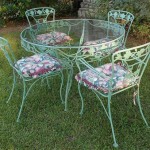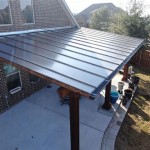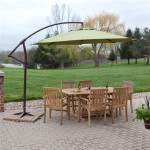Covering Patio Furniture in Winter: A Comprehensive Guide
Protecting outdoor furniture during the winter months is crucial for extending its lifespan and maintaining its aesthetic appeal. Harsh winter conditions, including snow, ice, freezing rain, and fluctuating temperatures, can inflict significant damage on a variety of materials commonly used in patio furniture construction. Leaving furniture exposed to these elements can lead to cracking, warping, fading, rusting, and overall deterioration, necessitating costly repairs or replacements. This article provides a detailed exploration of the reasons for covering patio furniture in winter, the types of covers available, and the best practices for ensuring adequate protection.
The primary objective of covering patio furniture is to shield it from the direct impact of winter weather. Sunlight exposure, even during winter, can fade fabrics and plastics over time. Moisture, in the form of rain and snow, is particularly detrimental. When water penetrates porous materials like wood or certain fabrics, it can freeze and expand, causing structural damage. Metal furniture is vulnerable to rust and corrosion when exposed to moisture and salt, often present in areas that experience snowfall and ice. By covering furniture, a protective barrier is created that minimizes exposure to these damaging elements, thereby preserving its integrity.
Proper winterization of patio furniture also contributes to spring readiness. Furniture that has been adequately protected throughout the winter requires less cleaning and maintenance when the weather warms up. Removing covers in the spring reveals a clean, well-preserved set, ready for immediate use. This eliminates the need for extensive scrubbing, stain removal, or rust treatment, saving time and effort.
Understanding the Detrimental Effects of Winter Weather
The winter season presents a unique set of challenges for outdoor furniture. Understanding the specific ways in which winter weather damages furniture is essential for making informed decisions about protection strategies. The combined effect of temperature fluctuations, moisture, and sunlight can accelerate the degradation process.
Temperature fluctuations cause materials to expand and contract. This repeated expansion and contraction can create stress on joints and seams, leading to cracking and weakening. Wood furniture is particularly susceptible to this type of damage. Freezing temperatures also cause water to freeze within porous materials. As water freezes, it expands, putting pressure on the surrounding material. This process can lead to splitting, cracking, and delamination of wood, plastic, and even some types of metal coatings.
Moisture is a significant contributor to damage. Rain and snow can seep into furniture, fostering mold and mildew growth. This not only affects the appearance of the furniture but also poses potential health risks. Metal furniture exposed to moisture is prone to rust and corrosion. The presence of salt, whether from de-icing efforts or coastal environments, accelerates this process. Fabrics can become stained, faded, and weakened by prolonged exposure to moisture. Cushions and upholstery can also harbor moisture, leading to musty odors and promoting the growth of bacteria.
While the sun's rays are less intense during winter months, ultraviolet (UV) radiation can still cause significant damage. UV radiation breaks down the chemical bonds in many materials, leading to fading, discoloration, and embrittlement. Plastics are particularly vulnerable to UV damage, becoming brittle and prone to cracking over time. Fabrics can also fade and weaken when exposed to prolonged sunlight. Even darker colored materials will undergo sun bleaching despite the muted winter sunlight.
Selecting the Right Type of Patio Furniture Cover
Choosing the appropriate type of cover is crucial for providing optimal protection to patio furniture. A variety of materials and designs are available, each offering different levels of protection and durability. Factors to consider when selecting a cover include the type of furniture, the climate conditions, and the desired level of protection.
Waterproof covers are essential for protecting furniture from rain and snow. These covers are typically made from materials such as polyester with a PVC coating or heavy-duty vinyl. Waterproof covers prevent water from penetrating the furniture, minimizing the risk of water damage, mold growth, and rust. Breathable covers, on the other hand, allow air to circulate, preventing condensation from building up underneath the cover. This is particularly important in humid climates where trapped moisture can lead to mildew and mold growth. Breathable covers are often made from materials such as canvas or specialized waterproof fabrics with microscopic pores that allow air to pass through.
Heavy-duty covers are designed for areas with harsh winter conditions, such as heavy snowfall, strong winds, and extreme temperatures. These covers are typically made from thicker, more durable materials that can withstand the rigors of winter weather. Reinforced seams and UV protection are also common features of heavy-duty covers. Lightweight covers are suitable for areas with milder winters or for temporary protection. These covers are typically made from thinner materials and are easier to handle and store. However, they may not provide adequate protection against heavy snow or strong winds.
Custom-fit covers are designed to fit specific pieces of furniture, providing a snug and secure fit. These covers offer the best protection, as they minimize the amount of exposed surface. Universal covers are designed to fit a range of furniture sizes and shapes. While they may not provide as precise a fit as custom covers, they are a more cost-effective option for protecting multiple pieces of furniture. Fastening systems, such as straps, buckles, and drawstrings, are essential for securing covers in place and preventing them from being blown away by the wind. Look for covers with adjustable straps and buckles that can be tightened to provide a secure fit. Drawstrings allow you to cinch the cover around the base of the furniture, preventing wind from lifting it.
Best Practices for Covering Patio Furniture
Simply purchasing a cover is not enough to guarantee effective protection. Proper preparation and installation are essential for maximizing the benefits of using patio furniture covers. These steps ensure that furniture is adequately protected throughout the winter months and ready for use in the spring.
Before covering furniture, it is important to thoroughly clean it. Remove any dirt, debris, and stains from the surfaces. Use a mild soap and water solution to clean the furniture, and rinse it thoroughly. Allow the furniture to dry completely before covering it, as trapping moisture underneath the cover can lead to mold and mildew growth. Consider applying a protective sealant to wood furniture before covering it. This will help to repel moisture and prevent cracking and warping. For metal furniture, apply a rust inhibitor to protect it from corrosion. If possible, store cushions and other removable items indoors during the winter months. This will protect them from moisture, mold, and fading. If storing cushions indoors is not an option, wrap them in plastic bags or waterproof covers to protect them from the elements.
When installing covers, ensure that they fit snugly and securely. Use straps, buckles, or drawstrings to fasten the cover in place and prevent it from being blown away by the wind. Consider using furniture risers to elevate the furniture off the ground. This will prevent moisture from accumulating underneath the furniture and reduce the risk of rot and corrosion. Regularly check covers throughout the winter months to ensure that they are still in good condition. Remove any snow or ice that accumulates on the covers, as the weight can damage the furniture or the cover itself. If the cover becomes damaged, repair it promptly to prevent moisture from penetrating the furniture. For example, a tear can be temporarily patched with strong tape until a more durable solution can be applied.
Properly storing covers when not in use will extend their lifespan. When removing covers in the spring, clean them thoroughly and allow them to dry completely before storing them. Store covers in a dry, well-ventilated area to prevent mold and mildew growth. Fold covers neatly and store them in a storage bag or container to protect them from dust and pests. Consider using a desiccant in the storage container to absorb any excess moisture. By following these best practices, patio furniture can be effectively protected throughout the winter months, ensuring its longevity and preserving its aesthetic appeal for years to come.

How To Winterize Patio Furniture The Cover Blog

How To Winterize Patio Furniture The Cover Blog

How To Winterize Patio Furniture The Cover Blog

How To Ensure Your Outdoor Furniture Survives The Winter Reviewed

How To Cover Outdoor Furniture For Winter Rst Brands

How To Winterize Your Patio Furniture By Alco Covers

The Best Ways To Cover Your Outdoor Furniture

How To Protect Patio Furniture In The Fall And Winter Forbes Vetted

What To Do With Outdoor Furniture In The Winter Family Handyman

How To Take Care Of Your Outdoor Furniture Over Winter Diggs And Dwellings
Related Posts

